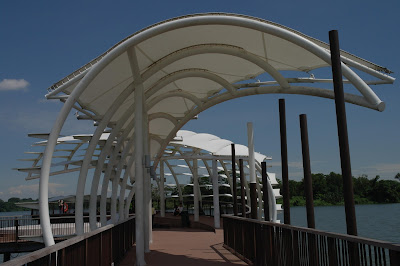

At the fishing jetty, the 3rd station of the Learning Trail, we carried out water quality testing. We learnt that good water quality is essential for living organisms in the water to thrive, which with then affect the health of eco-systems and safety for human contact and consumption. We personally collected some water from the reservoir itself and tested the sample by the following parameters: debris & smell, colour, turbidity, temperature, dissolved oxygen and pH. Under debris & smell, we saw that the water from the reservoir was colorless, with no debris seen on the water surface and an odourless smell. Moving on to colour, the water we collected was slightly greenish, indicating an algal bloom due to the high nutrients in the water, fertilisers or organic matter. For turbidity, the result was 40JIU which meant that the water was only slightly turbid. Next, the temperature that we had received from the water was 28 degrees Celsius, which was within the acceptable range of 28-30 degrees Celsius. The reading for dissolved oxygen is 4ppm and from this, we can analyse that the amount of oxygen dissolved is sufficient and at an acceptable limit, neither too much nor too little. Lastly, the PH of the water is in between 7 and 8, proving that the water’s pH is optimal. From these findings, we can conclude that the water is relatively clean but it cannot be directly drunk from this reservoir. It has to undergo treatment at a water treatment plant as there might be microscopic bacteria and unseen particles. However, the water quality of our reservoirs are considered rather clean as compared to water with chemical waste in it, which is rendered toxic even after it has been treated.




















